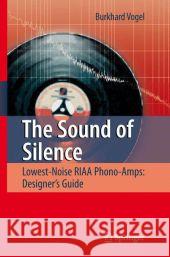The Sound of Silence: Lowest-Noise Riaa Phono-Amps: Designer's Guide » książka
The Sound of Silence: Lowest-Noise Riaa Phono-Amps: Designer's Guide
ISBN-13: 9783642095573 / Angielski / Miękka / 2010 / 352 str.
It is still a challenge to develop a low-noise ampli er - despite the fact that no- days (2007) nearly every solution of an electronic question of the consumer world can be solved by digital means. There is a wide eld of tasks left that can only be satisfyingly attacked with the help of old-fashioned analogue technology: sensors that are coupled to the existing and living world around us are always confronted with analogue signals. Those - in most cases - tiny signals have to be ampli ed and treated with unbelievably high electronic care. Therefore, frustration on noisy devices should always be turned around into motivation for the search of nearly noiseless solutions As a producer of such tiny analogue signals the vinyl record (33 1/3LPand 45 Single/Maxi) is a typical representative of our yesterday - 20th century - life. Despite the nearly 100% digitization of the consumer world it is still alive - with growing sales revenues around the world. One should expect that all secrets of the ampli er chain that transfers the signals out of the record's grooves to our ears are well known. Yes and no Much is written about distortion, overload matters, noise, 1 phase angles, frequency response, etc . Most technical aspects of ampli ers and sensors were well described. But simple questions like e. g.: "my moving-magnet cartridge - how much noise does it produce?" or "what's the signal-to-noise-ratio (SN) of my phono-amp after A-weighting?" are still not that easy to answer today.
The content of this book will lead to affordable phono amplifier design approaches which will end up in lowest-noise solutions not far away from the edge of physical boundaries set by room temperature and given cartridges - thus, fully compatible with very expensive so called "high-end" or "state-of-the-art" offers on today s markets - and, from a noise point of view in most cases outperforming them! This book demonstrates that theory is not far away from reality.











